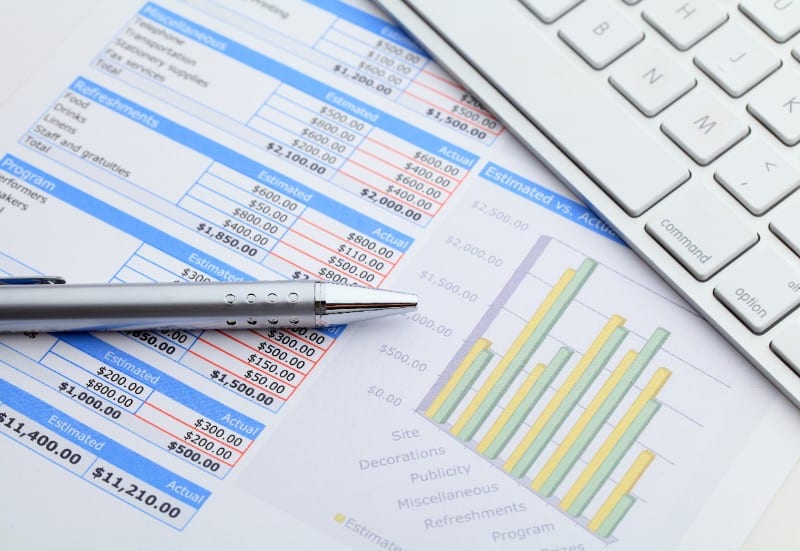Are you wondering which are the most important SEO key performance indicators (or KPIs) to track? In this article, we’re going to discuss what key performance indicators are, the most important SEO KPIs to track, and what KPIs mean for your future marketing campaigns.
Table of Contents
What are Key Performance Indicators?
KPIs, or key performance indicators, is a metric used by marketers to measure the organic performance and progress of a website. The definition of SEO can be described by a number of ranking factors and KPI’s.
Before, we discussed the best digital marketing tactics to grow your business and increase website traffic. After doing your research and finding the best way to improve your online presence, how can you track its progress and find out if it’s actually working? Through key performance indicators.
Tracking the performance of your website is just as important as planning and executing your marketing strategy. Because Google’s algorithms are constantly changing, KPIs are vital to keeping your website updated so that it doesn’t lose its search rank or organic visits.
SEO Ranking and KPIs
SEO has been proven to be an effective digital marketing strategy which is why businesses continually focus on improving their SEO. As a matter of fact, 70% of marketers see SEO as more effective than PPC. They simply see more results in traffic, leads, and sales from SEO. Most importantly, marketers view SEO to be a long-term strategy for businesses rather than PPC(pay-per-click).
Before we get into detail with SEO KPIs, let’s discuss the most important factors that go into SEO ranking. This way, you’re more likely to have favorable results when measuring your KPIs.

Top 5 Ranking Factors for Google SEO
Security and Accessibility
Google has stated that site security is a major factor for SEO. Think about it, users want to be able to search the internet without having their data compromised. This is why search engines want to lead users to trustworthy sites. How can you be sure that your website is secure? Your URL should begin with HTTPS and not HTTP. If it begins with HTTP, add an SSL certificate to ensure that your site is secured.
Accessibility is another important SEO factor. In other words, Google has bots that take the information from your website and indexes it into the search results that users would see when putting in certain keywords. Google has to be able to visit your URL and read the information on your site.
Ways to make sure Google bots are able to read your site include:
- Having a well-coded website;
- Having a robots.txt file that lets you know if Google can or can’t find information from your site; and
- A sitemap that lists all your pages and makes your site easy to navigate.
Page Speed
Page speed is essential to a website’s SEO. Statistics show that 46% of users say that page loading time is what they dislike the most about web browsing on mobile. However, 73% of the internet has slow loading speed, so if your site loads in less than 3 seconds, you already have a competitive edge over the majority of the web!
So, how can you improve your page speed? Images that are too big or outdated flash plugins tend to be the main culprit. Luckily, Google provides a guideline on how to best optimize images. Also, make sure to get rid of or update plugins that are no longer working.
Mobile-Friendly
Smartphones are basically mini computers that people use everyday. That’s why it’s no surprise that mobile traffic for web browsing has drastically increased in the US from 57% to 63% in 2017. What does this mean for website owners? Mobile friendly pages are another major factor for SEO and are beating desktop traffic.
Google is now reportedly indexing mobile-optimized pages first before desktop sites. So, how can you ensure that your site is mobile-friendly? Here are some tips below:
- Program your site to automatically fit the size of your device
- Make sure your site is easy to navigate by adding accessible menus
- Use large fonts for readability
- Make sure that ads aren’t disruptive

Optimized Content
Optimizing content can span from adding keywords to changing content length and optimizing images to adding videos. In other words, there’s a lot you can do with your website content to improve your SEO.
LSI Keywords
LSI or latent semantic indexing refers to the terms associated with the main keyword people search for. LSI helps Google come up with the results. For instance, more users are starting to use search by voice. In this case, you would optimize content that would cater to questions and natural language patterns. An example of this would be customers searching for a restaurant. Some would search by typing in the phrase “best restaurants near me” while some would search “what are the best restaurants in Chicago” when using voice search.
Answer Boxes
Answering questions is another effective strategy for content optimization. Answer boxes are considered a featured snippet. Featured snippets are organic search results that appear at the top, or at “position zero”, of search results and include a block of text with a link to the website. The main purpose of answer boxes is to answer a question that a user inputs into a search query. How does this benefit businesses? It increases traffic and sessions.
Adding Videos
Cisco claims that video content will be responsible for 80% of online traffic by 2021. Because people of all age groups watch videos and majority of them prefer to watch an informational video than reading a blog post, video content is an excellent way to optimize your content. There’s a reason why YouTubers can receive high revenue with tutorials and unboxing videos. A lot of customers find it easier to make purchasing decisions when they can visually see how well a product works.
Technical SEO
Content creation is not only an art but a science. Because search engines rely on a structure to index information into search results, it’s important to follow the technical SEO guidelines.
Here are some things to keep in mind when organizing your content:
- Using keyword phrases in titles helps Google determine which content is relevant to search queries
- Content hierarchy is crucial when organizing your content by importance
- Using header tags (ex. Title for H1 and H2 or H3 for subheads/additional keywords
- Include a meta description that catches readers attention and has your keyword phrase

Examples of Key Performance Indicators
Now that you know that factors of SEO that are essentially the backbone of successful KPIs, let’s discuss some of the most important ones to track.
Organic Sessions
Organic sessions refer to the amount of traffic your website gets over time. You’ll know your SEO is in good shape is effective if you see a steady increase, especially after a marketing campaign. However, if you see a decrease in sessions, that means something needs improvement.
Session Duration
Google defines a session as interactions a user makes within a time frame on your website. This means that you can track a user’s session from the moment they click on your website to when they finalize a purchase or make a lead submission. Sessions are more insightful than clicks alone because it can accurately determine how users interact with your site.
Conversions
When a user visits your website and ends up making a purchase from your business, this is considered a conversion. In other words, tracking your conversion rate is one of the best ways to measure the success of a digital marketing campaign.
Ultimately, your end goal should get visitors to make a purchase or at least create leads. If a user doesn’t make a purchase but decides to subscribe to a newsletter, book an appointment, or share your website with others, this is considered a lead.
Bounce Rate
Remember how we discussed the importance of page speed and how loading time is the most disliked aspect of mobile sites? Studies show that users are more likely to close a page if it takes more than 3 seconds to load. This is called the bounce rate.
Bounce rate shows how often people leave your website without interaction with anything. A high bounce rate can mean a number of reasons such as not having engaging content, a poorly designed site, or worse, a slow loading time.
Top Exit Pages
Top exit pages show you the final page where a user leaves your site and ends a session. Your main goal for an exit page is to have it be a purchase confirmation or a thank you page. If you see that people are exiting on your home page, information, or product/service page, you might want to investigate what’s causing an early end to sessions.
Click-Through-Rate (CTR)
The CTR measures how often users click on your website after appearing in search results. A high organic CTR is a positive sign because it shows that your website is optimized favorably to Google’s and users’ standards.
Branded Traffic
One of the main reasons for launching a digital marketing campaign is creating brand awareness. If you see an increase in traffic due to users searching for your business name, that means your branding campaign was successful. High branded traffic also indicates that your business name is becoming more recognized.
Return on Investment (ROI)
Your ROI measures your overall success and worth of a campaign by taking your sales growth and marketing costs into account.
Here’s how your ROI is calculated:
(Sales growth-marketing cost)/ marketing cost= ROI
If you see a steady growth or positive ROI every month, that means your campaign was successful. However, it’s not uncommon to start with a negative percent as a large amount of revenue will not be generated right away.

What KPIs Mean for Your Future Marketing Campaigns
As you can see, KPIs are an extremely useful tool for measuring the success of your campaigns. What this means for your future marketing campaigns is that KPIs will be a guide for them. It’s important to know that SEO is not a one-fits-all type of ordeal. Every business has different goals and needs. Therefore, different strategies for marketing campaigns. Think of KPIs as part of the trial and error process. This means that you might need to focus on other optimization factors more than others and KPIs will let you know which.
Contact SEO Design Chicago Today
Our team of experienced professionals can help your business starting from planning a marketing campaign to tracking your key performance indicators. We recognize the amount of time and effort that goes into launching a successful campaign and our job is to take the load off for you as a business owner.



Contact Us Today!